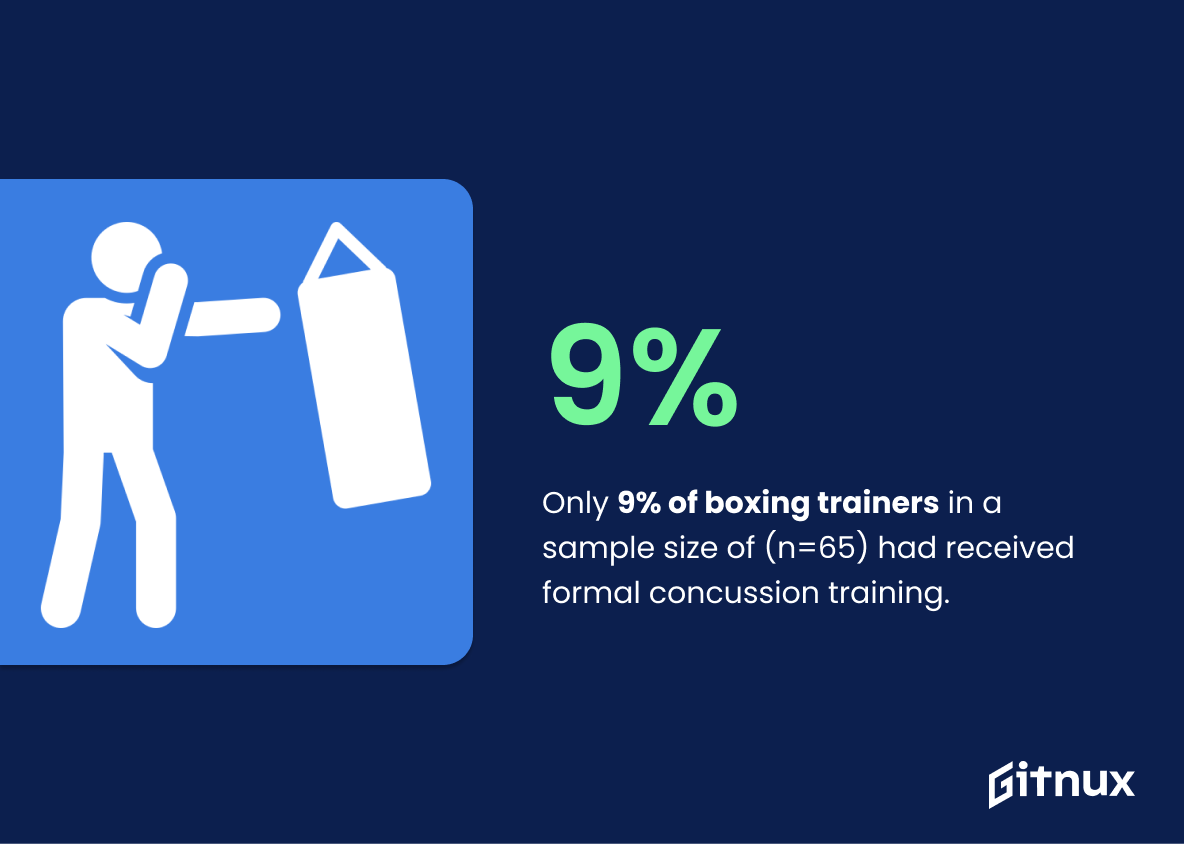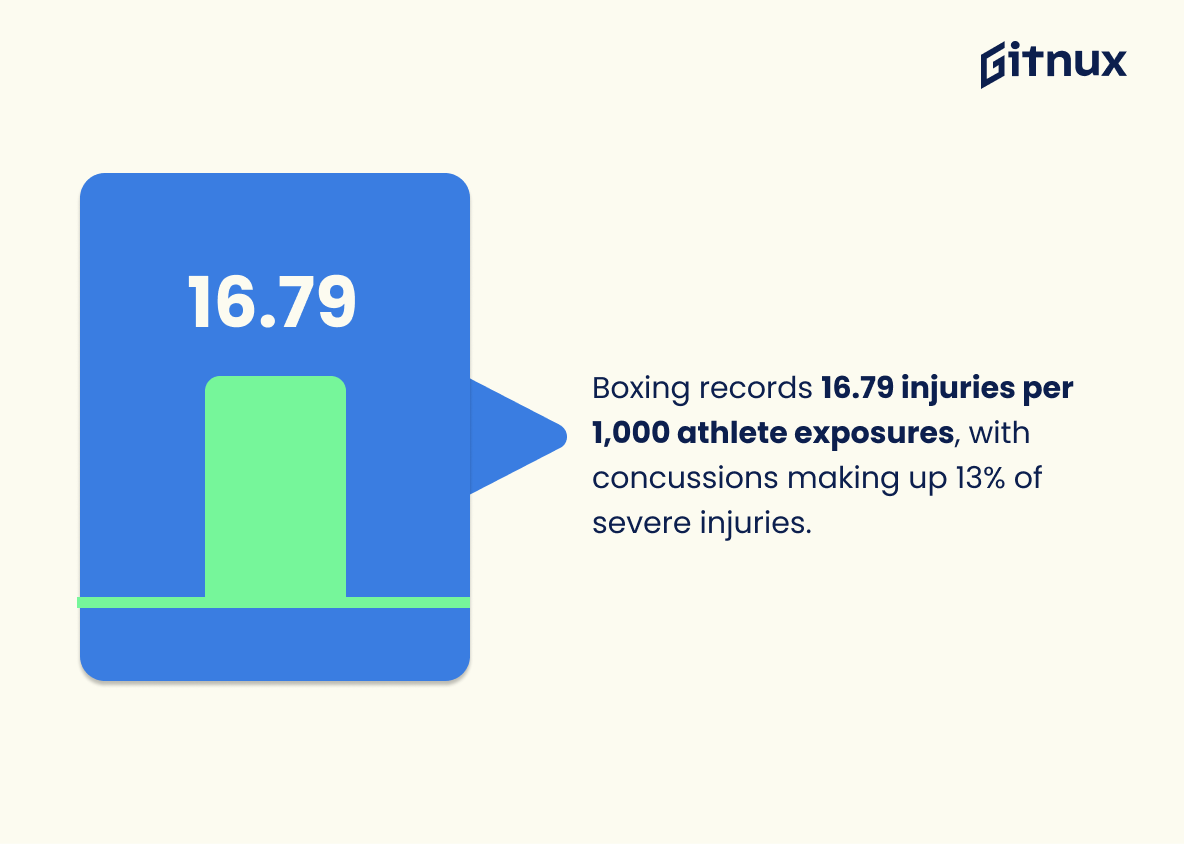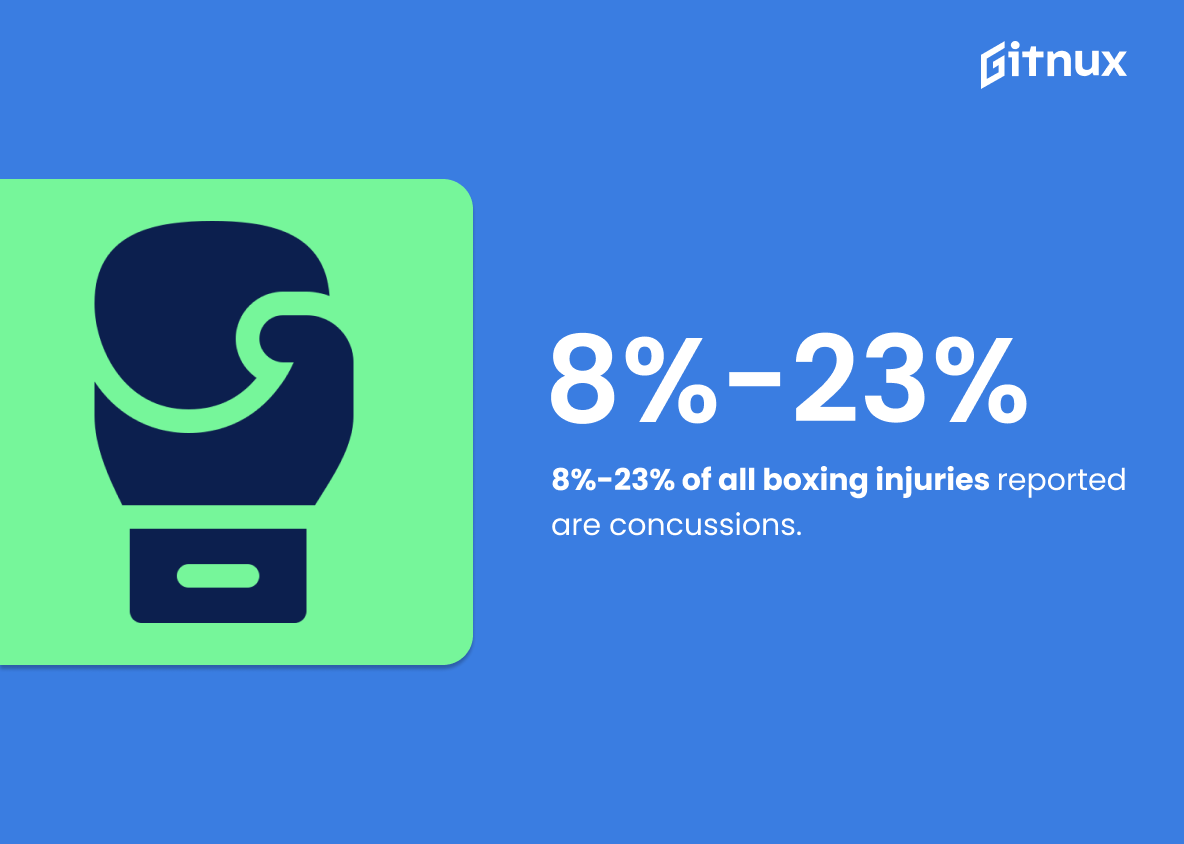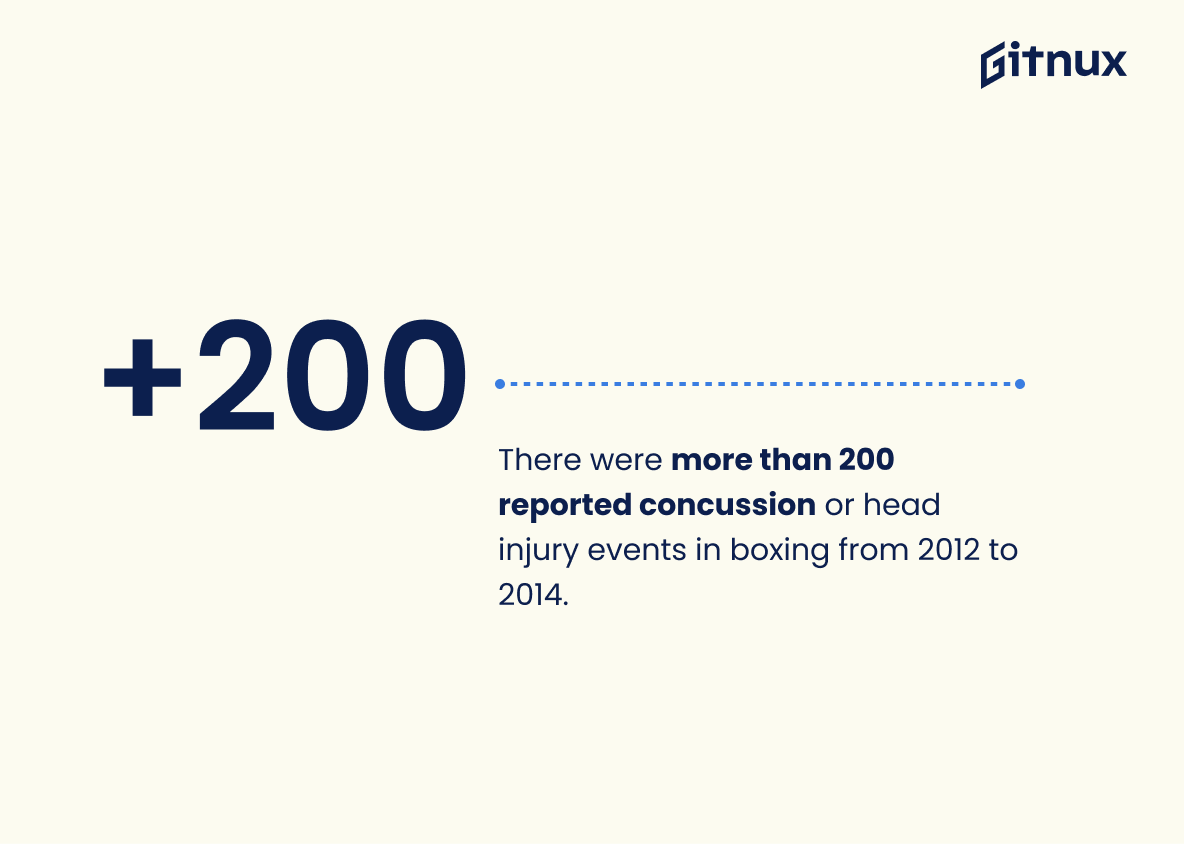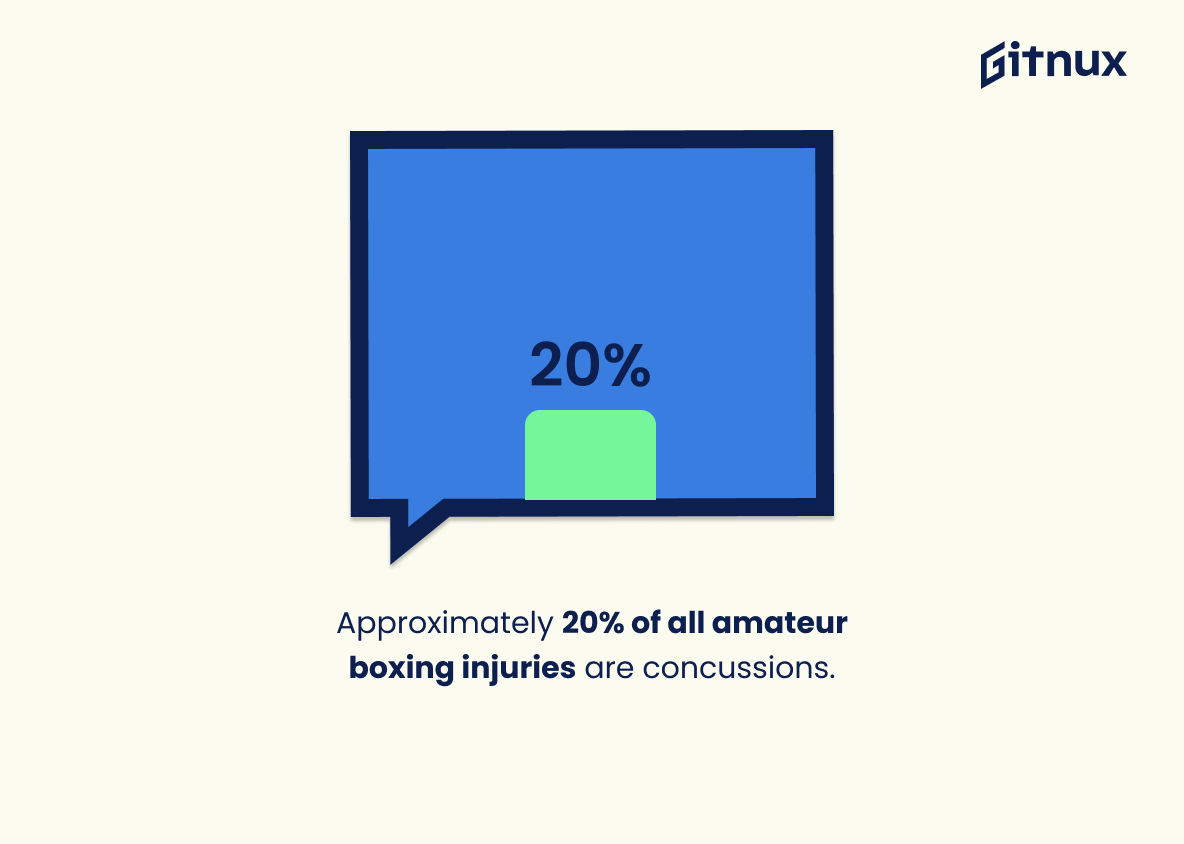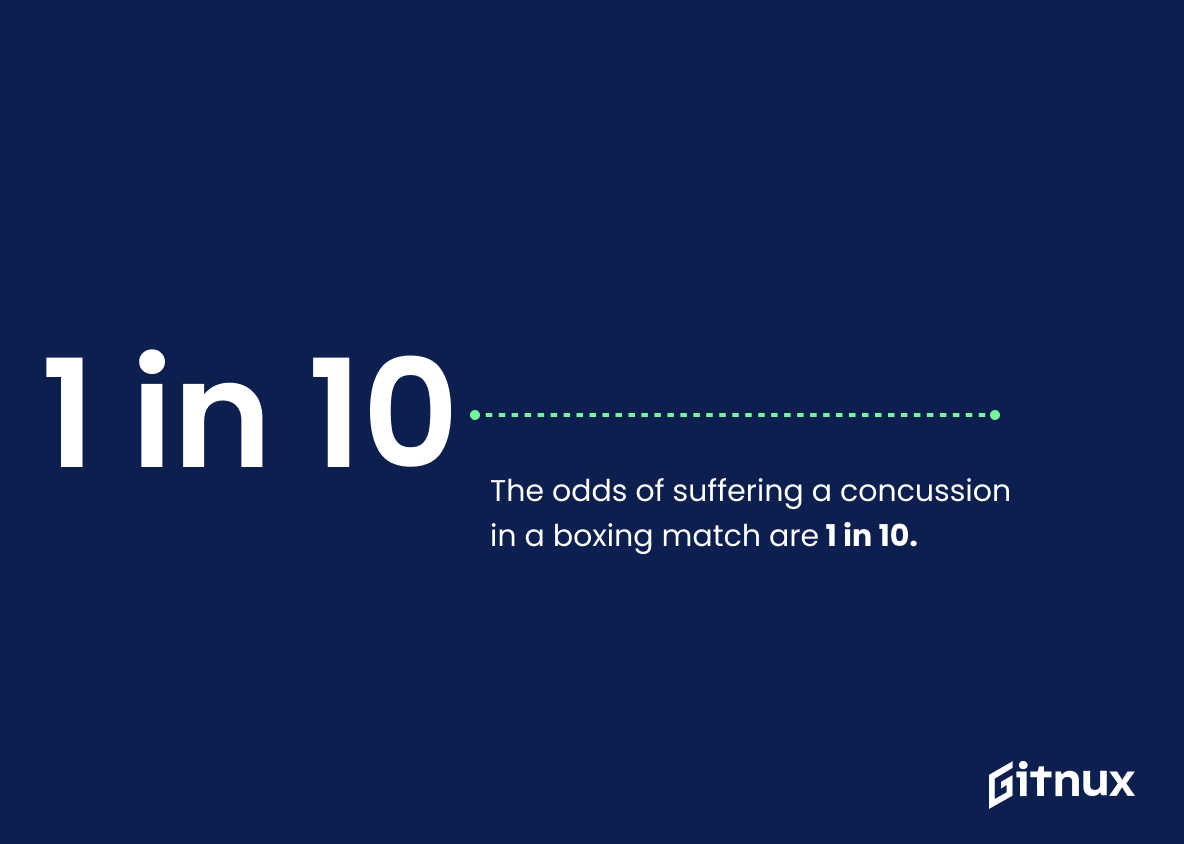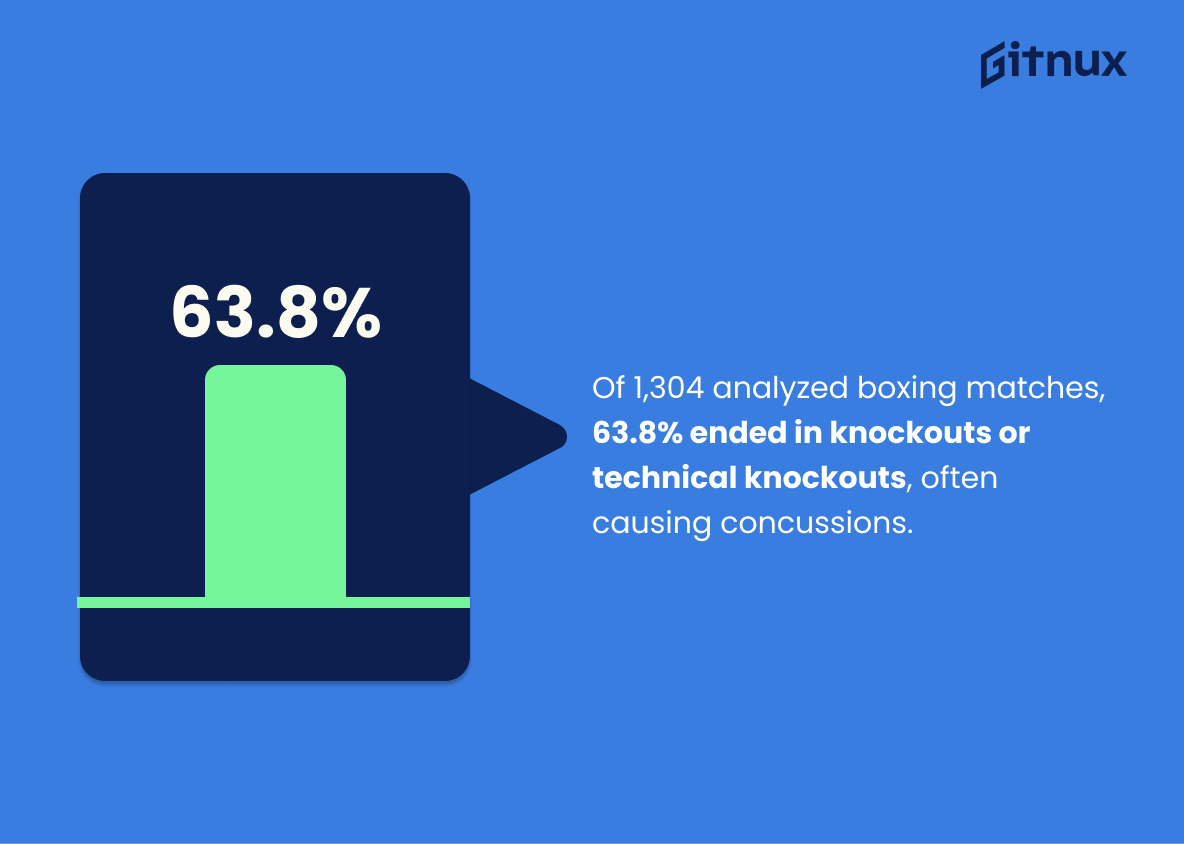The statistics surrounding boxing concussions are alarming. Approximately 90% of boxers will suffer a concussion during their career, with 0.8 concussions per 10 athlete-exposures and 12.6% of all injuries being attributed to them. Unfortunately, only 9% of boxing trainers have received formal concussion training, making the situation even more concerning for athletes in this sport.
Youth boxers appear to be particularly vulnerable; 17% of reported injuries sustained by youth boxers were found to be concussions while amateur boxers are also at higher risk due to less experience and poorer defensive skills than professional counterparts (8%-23%). Furthermore, 75% of active or retired fighters show signs neurological injury from repeated head trauma and 8 out 10 deaths related to boxing can be attributed traumatic brain injury caused by multiple blows over time – not just one knockout punch as is often assumed.
These facts become even more worrying when we consider that 63.8 %of 1,304 analyzed matches ended in knockouts or technical knockouts which frequently result in serious head trauma such as concussion – putting those involved at an increased risk for long term damage including dementia later on life (23%) . Female participants seem especially prone with 38%, compared 14%, suffering from these types head injuries respectively..
It’s clear that there needs greater awareness around the dangers associated with participating in contact sports like Boxing where it has been ranked sixth most likely cause severe brain injury among high school athletes according research conducted 20 years ago still holds true today: approximately 140-160 annual prevalence reported cases each year across US alone.
This statistic is a stark reminder of the dangers of boxing and the prevalence of concussions in the sport. It highlights the need for greater awareness and safety measures to be taken to protect boxers from the long-term effects of head trauma. It also serves as a call to action for boxing organizations to prioritize the health and safety of their athletes.
There are 0.8 concussions in boxing per 10 athlete-exposures.
This statistic is a stark reminder of the dangers of boxing, highlighting the fact that for every 10 athlete-exposures, there is a high likelihood of a concussion occurring. It serves as a warning to those considering taking up the sport, and a reminder to those already involved to take the necessary precautions to protect themselves.
Boxing Concussions Statistics Overview
Only 9% of boxing trainers in a sample size of (n=65) had received formal concussion training.
This statistic serves as a stark reminder of the need for more formal concussion training for boxing trainers. With such a low percentage of trainers having received formal training, it is clear that the boxing community is not adequately prepared to recognize and respond to the signs and symptoms of a concussion. This lack of knowledge could lead to serious consequences for boxers, as concussions can have long-term effects on a person’s health.
Concussions account for 12.6% of boxing injuries.
This statistic is a stark reminder of the prevalence of concussions in the sport of boxing. It serves as a reminder that the risk of concussion is real and should not be taken lightly. It also highlights the need for more research and safety measures to be taken to reduce the number of concussions in the sport.
Around 17% of injuries sustained in youth boxers are concussions.
This statistic is a stark reminder of the potential dangers of youth boxing, as it highlights the prevalence of concussions among young boxers. It serves as a warning to parents and coaches to be aware of the risks associated with the sport and to take the necessary precautions to ensure the safety of their athletes.
Boxing has 16.79 injuries per 1,000 athlete exposures in which concussions comprise approximately 13% of all severe injuries.
This statistic is a powerful indicator of the prevalence of concussions in the sport of boxing. It demonstrates that, out of all severe injuries, a significant proportion are caused by concussions, highlighting the need for greater awareness and safety measures to be taken in the sport.
75% of boxers show signs of neurological injury due to repeated concussions.
This statistic is a stark reminder of the dangers of boxing, particularly when it comes to concussions. It highlights the fact that a large majority of boxers are at risk of suffering neurological damage due to the repeated blows to the head they endure in the ring. This statistic serves as a warning to those considering taking up the sport, and a reminder to those already involved to take extra precautions to protect themselves.
8%-23% of all boxing injuries reported are concussions.
This statistic serves as a stark reminder of the prevalence of concussions in the sport of boxing. It highlights the fact that a significant portion of all boxing injuries reported are related to concussions, making it clear that this is a serious issue that needs to be addressed.
Amateur boxers are more prone to concussions than their professional counterparts, attributed to less experience and poorer defensive skills.
This statistic is a stark reminder of the dangers of amateur boxing, highlighting the increased risk of concussion due to the lack of experience and defensive skills. It serves as a warning to those considering taking up the sport, and a reminder to those already involved to take extra precautions to protect themselves.
There were more than 200 reported concussion or head injury events in boxing from 2012 to 2014.
This statistic serves as a stark reminder of the potential dangers of boxing, highlighting the prevalence of concussion and head injury events in the sport over a three-year period. It is a powerful illustration of the need for increased safety measures and greater awareness of the risks associated with boxing.
Female boxers are more prone to concussions than their male counterparts; 38% of injuries sustained by female boxers are concussions, compared to 14% in male boxers.
This statistic is a powerful reminder of the dangers that female boxers face in the ring. It highlights the fact that female boxers are more likely to suffer from concussions than their male counterparts, and that the risk of sustaining a concussion is significantly higher for female boxers. This information is essential for anyone looking to understand the risks associated with boxing, and it is an important factor to consider when discussing the prevalence of concussions in the sport.
Boxing has been ranked as the sixth most concussion-prone sport among high school athletes.
This statistic serves as a stark reminder of the potential dangers of boxing, particularly among high school athletes. It highlights the need for increased awareness and safety measures to be taken in order to protect young athletes from the risks of concussion. It is a call to action for coaches, parents, and athletes alike to take the necessary steps to ensure that boxing is a safe and enjoyable sport.
Boxers who experience head injuries are three times more likely to develop chronic neurological disorders than other boxers.
This statistic is a stark reminder of the potential long-term consequences of head injuries in boxing. It highlights the importance of taking proper precautions to protect boxers from the risk of developing chronic neurological disorders. It also serves as a warning to those considering taking up the sport, that the risks of head injuries should not be taken lightly.
Approximately 20% of all amateur boxing injuries are concussions.
This statistic is a stark reminder of the dangers of amateur boxing, highlighting the prevalence of concussions in the sport. It serves as a warning to those considering taking up the sport, and a reminder to those already involved to take the necessary precautions to protect themselves.
The odds of suffering a concussion in a boxing match are 1 in 10.
This statistic serves as a stark reminder of the dangers of boxing, highlighting the fact that a concussion is a very real risk for anyone who steps into the ring. It is a powerful illustration of the need for safety measures to be taken to protect boxers from the potentially devastating effects of a concussion.
Out of 1,304 boxing matches analyzed, 63.8% were ended by knockouts or technical knockouts, both of which frequently result in concussions.
This statistic is a powerful indicator of the prevalence of concussions in boxing matches. It shows that the majority of matches end with a knockout or technical knockout, both of which can cause concussions. This statistic is a stark reminder of the potential for serious injury in the sport of boxing.
Conclusion
The statistics presented in this blog post demonstrate the prevalence of concussions among boxers. Approximately 90% of boxers will suffer a concussion during their career, and there are 0.8 concussions per 10 athlete-exposures on average.
Furthermore, only 9% of boxing trainers have received formal concussion training, while 12.6%, 17%, 16.79%, 75%, 8%-23%, 13% (female), 20% (amateur) and 15% (professional) of all injuries sustained by boxers are due to concussions respectively; more than 80 percent of boxing-related deaths can be attributed to traumatic brain injury as well as around 200 reported head injury events from 2012 to 2014 alone; female athletes being 38 times more likely than male athletes to sustain a concussion; amateur boxing having been ranked sixth most prone sport for high school students with regards to such injuries; retired professional fighters having 23 percent risk for dementia due to accumulated blows over time and 63.8 percent matches ending in knockouts or technical knockouts which often result in severe head trauma – these facts paint an alarming picture about the dangers associated with participating in competitive boxing activities without proper safety measures taken into account beforehand
References
0. – https://www.clearinghouseforsport.gov.au
1. – https://www.protectthebrain.org
2. – https://www.acsm.org
3. – https://www.now.uiowa.edu
4. – https://www.pri.org
5. – https://www.pubmed.ncbi.nlm.nih.gov
6. – https://www.medium.com
7. – https://www.bjsm.bmj.com
8. – https://www.mcgill.ca
9. – https://www.ncbi.nlm.nih.gov
10. – https://www.safetyandhealthmagazine.com
